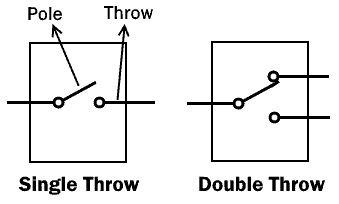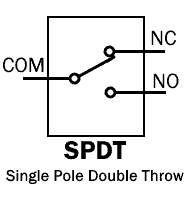Relays are the essential component for protection & switching of a number of the control circuits & other electrical components. All the Relays react to voltage or current with the end goal that they open or close the contacts or circuits. This article briefly discusses the relay basics & different types of relays that are utilized for a variety of applications.
What is a Relay?
A switch is a component that opens (turn off) & close (turn on) an electrical circuit. whereas, a relay is an electrical switch that control (switch on & off) a high voltage circuit using a low voltage source. A relay completely isolates the low voltage circuit from the high voltage circuit.
Construction of a Relay
To know the basic construction and internal parts of a relay, the following fig clearly shows an inside view of a relay. Lets discuss all of them one by one.
Terminals Of Relay
Generally speaking, there are four types of terminals in a relay.
Control Input or Coil Terminals:
Control input terminals are two input terminals of a relay that controls its switching mechanism.
A low power source is connected to these terminals to activate & deactivate the relay. The source can be AC or DC depending on the type of the relay.
COM or Common Terminal:
COM refers to the common terminal of the relay.
This is the output terminal of the relay where one end of the load circuit is connected.
This terminal is internally connected with either of the other two terminals depending on the state of the relay.
NO Terminal:
NO or Normally Open terminal is also a load terminal of a relay which remains open when the relay is not active.
The NO terminal becomes closed with the COM terminal when the relay activates.
NC Terminal:
NC or Normally Closed terminal is the other load terminal of a relay. This terminal is normally connected with COM terminal of the relay when there is no control input.
When relay activates, the NC terminal disconnects from the COM terminal & stays open until the relay is deactivated.
Poles & Throw:
Poles refer to the switches inside a relay.
The numbers of Switches inside a relay is called the poles of the relay.
The number of circuits being controlled per pole is called the throw of a relay.
A single throw relay can control only one circuit i.e. either OFF or ON, while a double throw relay can control two circuits i.e. alternating from one circuit to another by opening one circuit and closing another during switching (ON & OFF).
SPDT Relay
SPDT refers to single pole double throw relay.
The single pole means it can control only one circuit at a time. The double throw means its pole has two positions in which it can conduct.
The SPDT relay has two states & in each state, its one circuit remains closed while the other remains open & vice versa.








0 Comments